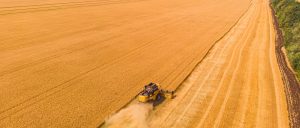Australian agribusiness lender Rural Bank expects an overall positive outlook for Australian agriculture in 2025, but lingering challenges in freight, climate and diplomatic relationships suggest it won’t be all plain sailing.
We summarise the report, with the full report available for download here.
Cropping
Rural Bank’s overlal outlook for cereal and oilseed growers is positive, with above-average production expected for the 2024/25 season and early export demand for canola, chickpeas and barley shaping up to be strong. Wheat demand is expected to pick up in early 2025 as global supply eases.
Rainfall in the 2024 harvest window, however, may lead to quality downgrades. Despite challenges, global market volatility offers marketing opportunities over the next six months.
Sheep
The New Year shapes up to be mixed for sheep producers, according to Rural Bank. A modest rise in lamb supply could offset strong demand both domestically and for export and suppress prices. Despite this, prices are tipped to exceed the five-year average, dependent on seasonal conditions.
Cattle
Momentum in Australia’s beef production is tipped to lift slightly, according to the rural lender, with lower carcass weights on average due to higher femail processing.
Prices may soften due to increased global supply, however demand for exports from the US, Japan and South Korea is expected to remain robust, providing support for beef.
Competition remains constrained amidst overall rising demand.
Wool
Ongoing challenges remain for the wool industry, Rural Bank says. Structural changes, including the onging shift away from Merinos and a shrinking national flock, is expected to see production fall up to 10%.
Timid demand from Chinese and European consumers amid sluggish global economic condition will act as a handbrake on upward movement in prices. Even though wool prices are stable, they are stuck below historical averages. Improved demand from consumers in key export markets could be the panacea for wool production in future years.
Dairy
Rural Bank is cautiously optimistic for the Australian dairy industry. An increase in production to 8.5 billion litres with stable prices provides dairy farmers some confidence going into the new year.
Margins remain under pressure from increased farm input prices, but with the forecast of slightly stronger global prices, dairy farmers may be granted time to adjust their cost base and find efficiencies.
Horticulture
Overall outlook for horticulture remains favourable, however challenges from biosecurity, trade conditions and disposable income of consumers will continue to drive outcomes, according to Rural Bank.
The lower Australian dollar should attract more interest from export markets, which will compete with rising domestic demand. Most notably, almond and macadamia prices are expected to strengthen, while fruit and vegetable prices may ease.








